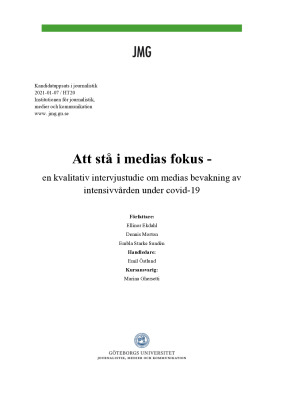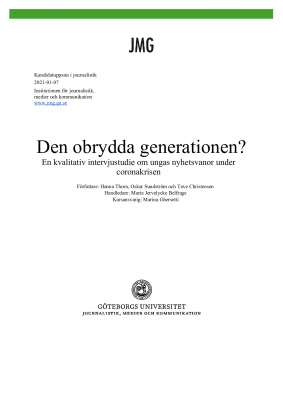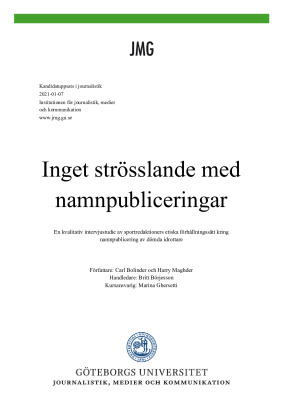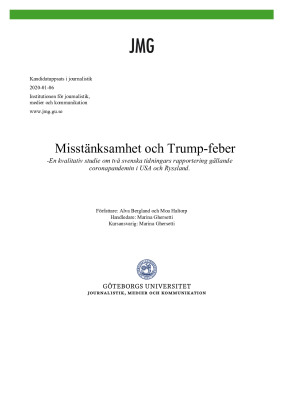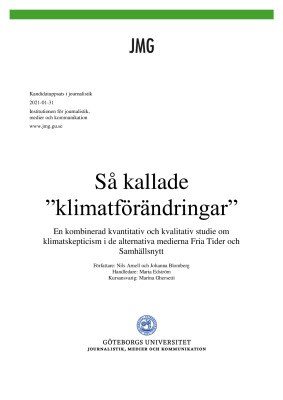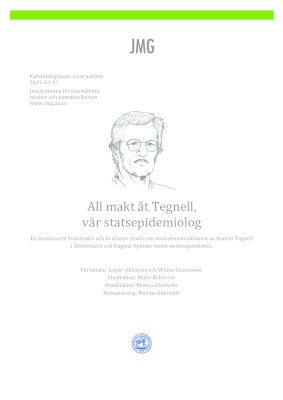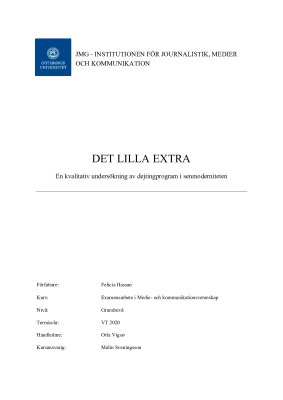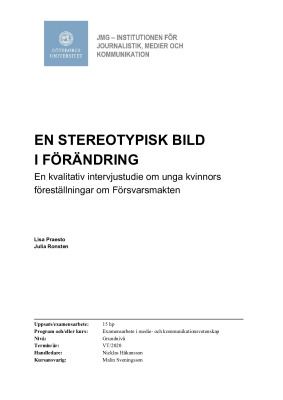The aim of this thesis is to find out whether increased media attention in relation to the covid19 pandemic of 2020 has any effects on the staff of intensive care units in Sweden. And if it
in any way shapes the professional identity of the healthcare workers at the units.
While healthcare always appears high on the daily agenda of most news media, the intensive
care unit barely ever takes part in that attention. However, during the covid-19 pandemic, the
intensive care units started to flourish on the front pages on a daily basis due to the high
amount of patients that the virus generated.
For this study, the main theoretical framework used is professional identity, specifically
Lipsky’s theory on street-level bureaucrats, as we found this theory most fitting for defining
intensive care unit workers and their identities.
For researching the newfound attention we used the agenda-setting theory created by Maxwell McCombs and Donald Shaw. News evaluation, as described by Jesper Strömbäck, as well as the theory of news framing as described by a variety of writers.
The study was conducted by deep and ingoing interviews with nurses, doctors and assistant
nurses working in an intensive care unit with patients afflicted by covid-19 during the
pandemic of 2020.
By carefully analyzing our interviewees experience of media and their own profession, we
tried to figure out whether or not their professional identities were changed or affected.
While most of our subjects did notice the increase in media attention, and all of them had different views and opinions on what it meant for them, none of the interviewees found that it had any direct impact on their professional identity or their work as a healthcare worker.
We discovered this to be because of the stable foundation of which the medical workers
professional identity is built from.
However, a few of the interviewees expressed that if the press were to put the intensive care
unit and the people who work there in a bad way, there is a risk that it could have an impact
on their professional identity.

